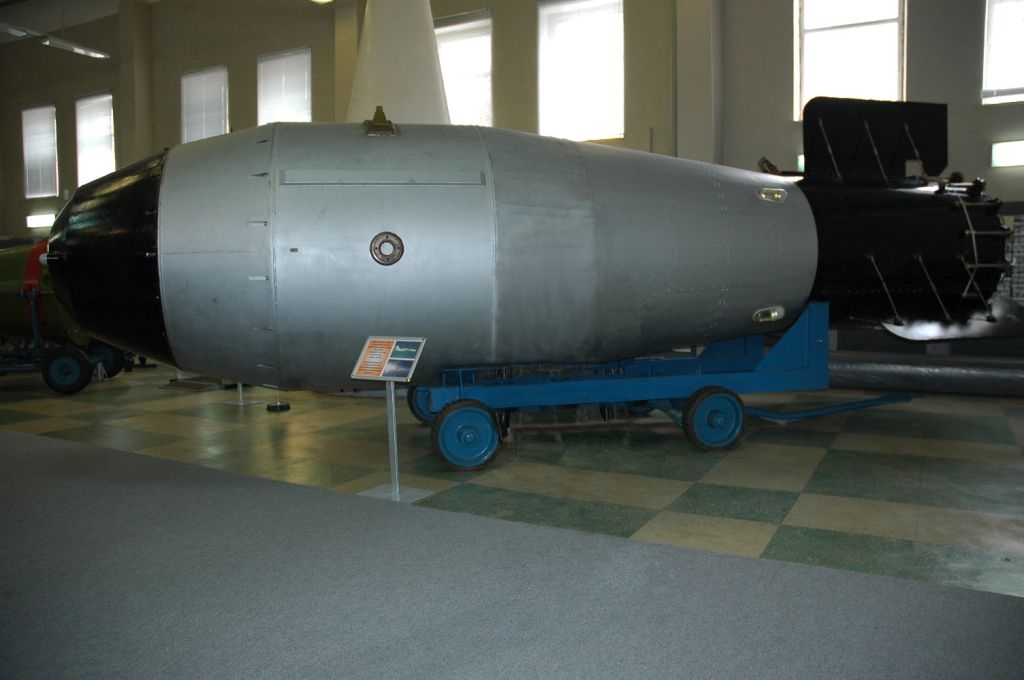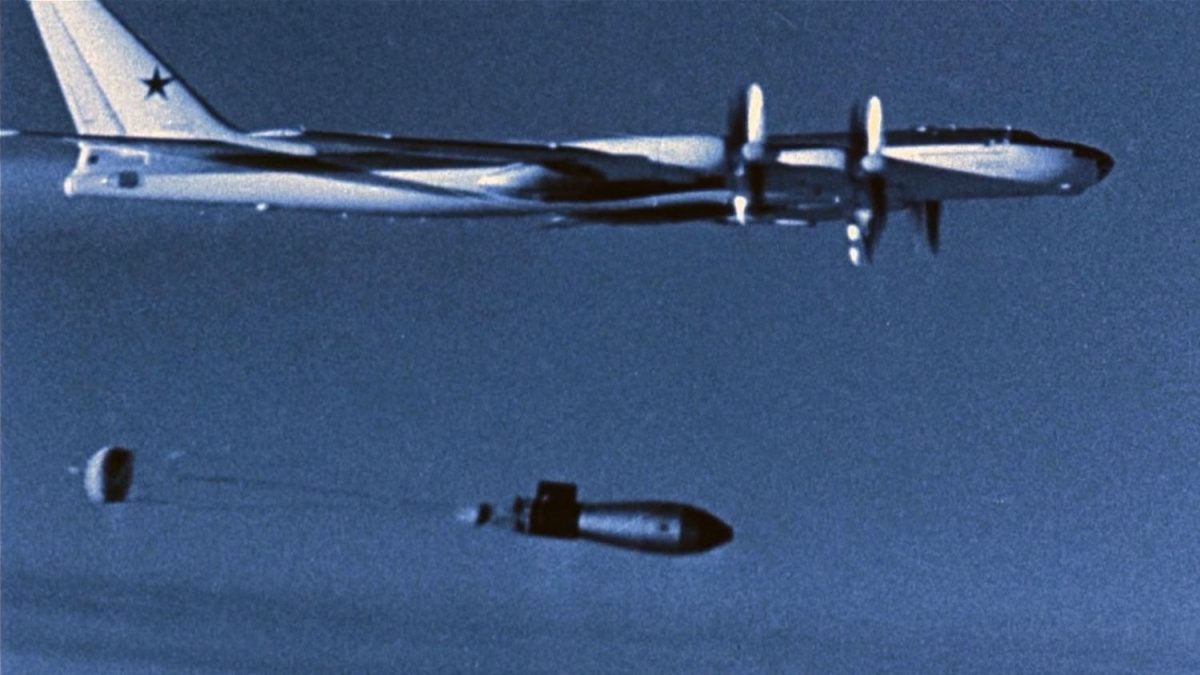In its latest report, the United States Defense Intelligence Agency (DIA) has warned that Russia’s military setbacks in Ukraine might be pushing the country to rely more heavily on its nuclear weapons as a mainstay of its military strategy.
The report, “Nuclear Challenges: The Growing Capabilities of Strategic Competitors and Regional Rivals,” evaluates the present nuclear capabilities of foreign adversaries. It states, “The weakness exhibited by Russia’s conventional forces in their invasion of Ukraine may increase Moscow’s reliance on nuclear capabilities going forward.”
The assertion may be bold, but it is not without reason. For instance, the report highlights that since the invasion began, Russian leaders have employed rhetoric evoking Russian nuclear weapon capabilities in order “to influence Western action.”
The country has repeatedly been accused of nuclear brinkmanship by the US-led NATO. In fact, Russian President Vladimir Putin announced in late September that he was contemplating changing the nuclear doctrine of the country. He warned the West that any aggression against Russia by a non-nuclear state, if backed by nuclear power, would be considered a “joint attack” on Russia—evoking fears of a nuclear escalation.
The looming dangers of nuclear escalation have led both—Russia as well as NATO—to conduct their respective nuclear drills. Earlier this month, NATO began a two-week nuclear exercise, ‘Steadfast Noon’, involving 2,000 military personnel and over 60 aircraft, including fighter jets capable of carrying US nuclear warheads. For the first time, the F-35 Lightning II stealth aircraft also took part in these drills.
On October 29, Russia conducted a comprehensive nuclear drill that simulated a retaliation strike involving missile launches. The exercise was directly overseen by President Putin.
The United States and Russia have been the biggest nuclear powers in the world since the Cold War. Russia, for one, possessed 40,000 warheads at its height in 1986, having inherited a massive nuclear program from the Soviet Union. It currently has up to 2,000 non-strategic warheads and about 1,550 deployed strategic weapons. The weaponry is now more deadly, but the numbers are smaller, according to data as of June 1, 2024.
With the limelight back on Russia’s nuclear weapons, we ‘throwback’ to a nuclear bomb test that the former Soviet Union carried out more than six decades ago, on October 30, 1961. The formidable ‘Tsar Bomba’ went down in history as the most powerful thermonuclear bomb created and tested in the world.
USSR Tested The Tsar Bomb 63 Years Ago
On October 30, 1961, the Soviet thermonuclear bomb known as ‘Tsar Bomba’ was detonated in a test over the Arctic island of Novaya Zemlya. The bomb was constructed at the height of the Cold War between the Soviet Union and the United States.
Although thermonuclear weapons had already been developed in the USSR by the mid-1950s, the US held an unquestionable nuclear weapons advantage over the USSR. Until 1961, there were no efficient ways to deliver nuclear bombs to the United States. As a result, the USSR was unable to think of a feasible nuclear retaliation.
The Soviet administration under Nikita Khrushchev had to show the US that it had developed a strategic advantage over the US. So, to uphold the idea of nuclear deterrence, the Tsar Bomba was created as a bluff.
Nikita Khrushchev ordered the project in July 1961 as part of the Soviet resumption of nuclear testing following the Test Ban Moratorium. The detonation was scheduled to take place during the 22nd Congress of the Communist Party of the Soviet Union. A team of Soviet physicists, including Andrey Sakharov, constructed the bomb. Unmatched in power, the three-stage bomb was intended as a demonstration of Soviet might.
According to some accounts, the bomb had a capacity of 100 megatons. However, that was considered too dangerous for testing. Consequently, it was altered to produce 50 megatons, which was thought to be almost 3,800 times more powerful than the American bomb that was unleashed on Hiroshima during World War II.
The Soviet device’s fusion technique was changed, which significantly reduced the fallout. The fin shed weapon measured around 26 feet (8 meters) in length and about 7 feet (2 meters) in diameter.
“With a yield of 50 megatons of TNT, Tsar Bomba was the culmination of several hydrogen bomb tests conducted throughout this time by both the Soviet Union and the United States,” writes the Atomic Heritage Foundation. While it was officially known as RDS-20, it was given many nicknames, most notably Tsar Bomba in the West.

In Russia, Tsar Bomba was also known as “Kuzma’s mother” or “Kuzkina mat” (Кузькинa мать). This moniker may have been a reference to Nikita Khrushchev’s pledge to show the US a “Kuzkina mat” at a 1960 UN General Assembly session, which roughly translates to “We’ll show you!”
Tsar Bomba was also known by several other aliases, including Big Ivan, Project 7000, and Product Code 202 (Izdeliye 202).
On October 30, 1961, Tsar Bomba was dropped during the test by a Soviet long-range bomber, a Tu-95V, flown by Major Andrei Durnovstev. A Tu-16 observer aircraft accompanied the bomber and was in charge of photographing the test and gathering air samples. The planes were painted a reflective white to reduce thermal damage to their surfaces.
The Tu-95V, which carried the nuclear bomb, was so big that the fuselage fuel tanks and bomb bay doors were removed. The mammoth bomber dropped the bomb by parachute, and it detonated on its own at 4,000 meters (13,000 feet) above the cape Sukhoy Nos of Severny Island, Novaya Zemlya. Notably, those on board were expected to have a 50/50 chance of surviving, even with the parachute and reflective paint.

The yield of the Tsar Bomba was roughly 1,570 times more potent than the combined yield of the bombs dropped on Hiroshima and Nagasaki, and it was ten times more potent than all of the conventional weapons that detonated throughout World War II.
The Tsar Bomba created the most powerful explosion ever recorded by a human being and was the greatest nuclear weapon ever set off. The test confirmed new design concepts for high-yield thermonuclear charges, enabling the building of a nuclear bomb “of practically unlimited power,” as stated in its final report.
Interestingly, US intelligence services used a KC-135A plane (Operation SpeedLight) in the region at the time to monitor the explosion. A US spy plane called Speed Light Alpha kept an eye on the explosion and got so close that its anti-radiation paint was burned.
The explosion created a mushroom cloud that rose over 60 kilometers in height. The explosion’s flash was seen from a distance of 1,000 kilometers. The physical impact of the explosion was even worse and appalling.
It was stated that structures over 160 kilometers away were damaged and that the desolate settlement of Severny, located 55 kilometers from ground zero, was leveled.

Despite its success, the Tsar Bomba was never thought to be operationally useful. Its size meant it could not be deployed by a ballistic missile. Rather, the bomb had to be delivered by regular aircraft, which could be readily detected before they could reach their destination.
The Soviet Union proved its ability to build nuclear weapons of immense force. At the time, the most potent thermonuclear charge tested by the United States, Castle Bravo, had been 15 megatons. Therefore, the development and testing of a super bomb was politically significant.
The United States did not boost the strength of its thermonuclear testing following the Tsar Bomba test, and the Treaty Banning Nuclear Weapon testing in the Atmosphere, Outer Space, and Under Water was signed in Moscow in 1963. The ban was signed by the US, Britain, and the U.S.S.R. in 1963 and joined by other countries later
- Contact the author at sakshi.tiwari9555 (at) gmail.com
- Follow EurAsian Times on Google News




